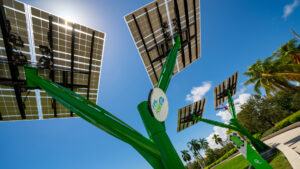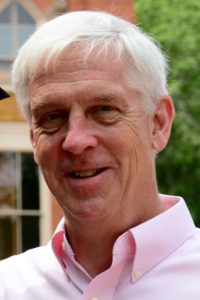By John Burr
Jacksonville Electric Authority (JEA) leaders will begin discussions in late March to decide how the utility will, for years to come, generate the electricity on which much of Northeast Florida depends.
At issue: Will Jacksonville’s publicly owned utility maintain a heavy reliance on burning fossil fuels such as coal and natural gas, or begin a meaningful changeover to solar power and other green alternatives?
This is an important discussion for people concerned over climate change and the need to slash emissions of carbon dioxide to avoid catastrophic climate disruptions. JEA’s generating plants release 90% of the greenhouse gas emissions from industrial sources located in Duval County, according to an analysis of U.S. Environmental Protection Agency records by the Sierra Club.
It’s also a long-term concern for the ratepayers. According to leading experts, solar power is now the cheapest way to generate new electricity in most parts of the world, and the costs continue to drop as the technology is improved. If JEA decides to expand electrical generation by burning more fossil fuels, it will be subjecting its ratepayers to higher bills for years to come.
Around the world, the rush to solar power is on. The International Energy Agency estimates that by 2027, more electricity will be generated worldwide by solar power than any other source, including coal and natural gas.
The lower cost of solar power is just part of the story. Solar power is also more secure – it offers a reliable source of cheap electric power not subject to the whims of market turmoil and international crisis. Sunlight is free, after all.

Florida’s largest electric utility, Florida Power and Light (FPL), has done its homework and has made its choice. FPL announced its Real Zero initiative last year. The Real Zero goals are ambitious – 52% decarbonization by the year 2030, 83% by 2040, and fully decarbonized, with no fossil fuel emissions, by 2045.
Where’s Jacksonville’s public utility? Less than 2% of its electricity comes from solar and other renewables, JEA Managing Director and CEO Jay Stowe said recently, conceding that “we have not done a good enough job with our available portfolio.”
Stowe said he expects JEA to have “significantly higher percentages of clean energy by 2030.” Sounds good, but significantly higher when you are at 2% clean energy could well end up far short of where JEA needs to go. And where FP&L says it will be.
How can FPL fill the electrical demand in Florida without burning coal and natural gas? Through increased modernization of its plants to utilize “a diverse mix of solar, battery storage, existing nuclear, green hydrogen, and other renewable sources,” according to a June 2022 company release.

And that’s how JEA can do the same. JEA officials often tout their goal of being the best municipal utility in the country. It’s time they understand that being the best includes being the cleanest.
Make your voice heard at JEA March 28 Board of Directors. The meeting will begin at 9 a.m. at JEA’s new Downtown headquarters building, 225 Pearl Street North. Go to the RenewJax.org website for more information on building a greener, healthier and safer Jacksonville.
John Burr served on the Jacksonville Special Resiliency Committee and is a steering committee member of Resilient Jax.



